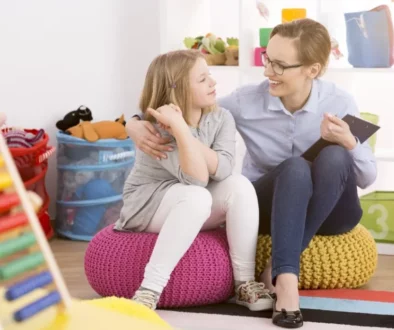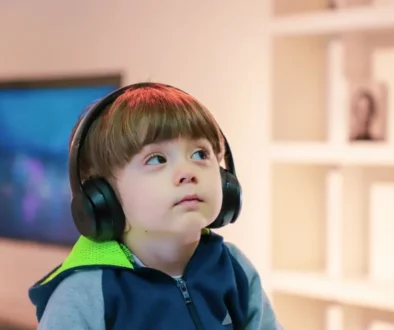What Are the Different Types of Autism?
Some labels are helpful. For example, the nutrition labels on food products or the labels you put on your children’s clothing before sending them off to summer camp. Where do you fall when it comes to labeling your child’s autism diagnosis? At one time, it was standard to differentiate different types of autism using labels.
You might have heard of “Asperger’s Syndrome” or “PDD.” Today, our understanding of children with autism has shifted, and these labels are not as commonly used.
Now, professionals recognize autism disorders as a spectrum. The lack of labels can be both liberating or frustrating for parents who are yearning to understand their child’s world.
Even so, having the language to use to explain and understand a new diagnosis can be helpful. While the autism spectrum is vast, the labels once used can help define the trends and characteristics that often occur together.
We’ve put together this guide to help you understand the kinds of autism, based on some older terms that many parents and caregivers have found helpful. Keep reading to better understand the nuances between a label and a spectrum.
Understanding Autism as a Spectrum
You have probably heard autism defined as a “spectrum,” but it isn’t always clear what that means. A spectrum implies a range of severity when the truth is a little more complex.
Autism in children manifests in the form of many different symptoms, behaviors, and traits. Even autistic children in the same family can have vastly different needs.
Some families have found it easier to think of the spectrum as a “Sundae Bar,” in which each autistic individual is a “sundae.” Everyone starts with a scoop of ice cream, and every autistic trait is a potential “topping.” Even two children with the same “toppings” might have more of one than another, leading to a very different “sundae!”
For example, two children may struggle with verbal communication. One might be completely non-verbal. The other might successfully use scripted language in prepared situations.
Both children are autistic, but require different levels of support. Their communication needs might demand unique interventions and therapies.
Labels can be helpful to describe children who require a similar level of support to function independently. When parents become aware of these labels, they can use them to advocate for services or supports for their children.
Types of Autism
Overall, professionals break ASD down into several “types.” They tend to describe clusters of symptoms or behaviors that often occur together. Although they’re somewhat outdated, it’s not uncommon to hear these terms used casually.
Asperger’s Syndrome
Asperger’s Syndrome is sometimes referred to as “high functioning autism.” This is because individuals with this range of symptoms need less support to function independently.
These children are often verbal. They may still struggle with non-verbal communication, such as social cues. They may display a flat affect in both their tone of voice and facial expressions.
Children with Asperger’s Syndrome may also develop one or more “special interests.” These are topics they discuss frequently and can play a major role in their everyday lives.
Childhood Disintegrative Disorder (CDD)
CDD tends to describe the onset of Autism Spectrum disorders in preschool-aged children. Generally, these are children who display typical development early in life and lose skills as they age. Children may lose language and social skills, or even show a change in their motor development.
Often, parents first notice the soft signs of autism while observing their children at play. Children’s play may be less social and look more like the “parallel play” of a toddler or younger child. They may show a sudden interest in sorting, lining up toys, or repeating scripted stories verbatim.
Regardless of what the onset looks like, children with these characteristics are part of the autistic spectrum. They can benefit from a variety of therapies and services intended to support their specific needs.
Pervasive Developmental Disorder-Not Otherwise Specified (PDD-NOS)
PDD-NOS is the label that once described children with “atypical autism.” In essence, children with PDD displayed autistic traits but did not technically meet the requirements for ASD.
Often, children diagnosed with autism after early childhood receive this label. It was also applied to any child who nearly met the criteria for Asperger’s Syndrome. These children were usually too high functioning to receive an Asperger’s diagnosis.
On paper, PDD-NOS and Asperger’s syndrome look almost identical. PDD-NOS is also characterized by difficulty with social interactions. This included unusual play and difficulty with changes in routines.
Rett Syndrome
Rett Syndrome was previously considered a form of autism. In fact, Rett Syndrome is caused by a genetic mutation. As a result, it is no longer considered part of the autism spectrum.
Rett Syndrome is a rare neurological disease that affects biologically female children. Like ASD, It is usually diagnosed in early childhood. That is one of several reasons why it was mistaken for an autism spectrum disorder.
Ultimately, it is a distinct medical diagnosis with a unique treatment plan.
All Autistic Children Are Unique
Knowing about the different types of autism is a great way for parents and caregivers to understand where their child falls on a broad spectrum. Still, every autistic child is unique, and will often break the mold in ways that will surprise and amaze you. These labels are one tool that you might find helpful as you learn and grow alongside your incredible child!
If you need support as you navigate the learning process, Developmental Pediatrics is ready to help. Reach out and contact us today for an appointment, or even to simply ask a question.



